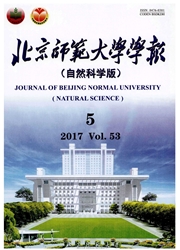

 中文摘要:
中文摘要:
以北京市为例,利用5个气象站点36年(1978—2013年)的气象数据,分析了特大城市热岛效应的年、季、周、时等不同时间尺度的变化特征,并借助小波变换方法分析了其周期性变化规律.结果表明:1)随着城市化进程的发展,北京城市热岛强度总体上呈现持续增长趋势,年增速为0.24℃·(10a)^-1.2)研究期内北京市热岛效应存在多尺度的时序变化特征:冬季最强、夏季最弱、夜间最强、白天较弱且存在典型的逆周末效应.3)小波分析表明,北京市热岛强度在年际尺度上存在4个显著变化周期,21a具有全域性,为主周期;在日变化尺度上同样存在4个显著变化周期,其中120d周期震荡最强,为主周期.
 英文摘要:
英文摘要:
Meteorological data of Beijing from 1978 to 2013were used to investigate the characteristics of inter-annual,seasonal,weekly and fixed hourly variations of urban heat island(UHI)effect.Periodic variation was probed by wavelet analysis.Inter-annual mean urban heat island intensity(UHII)presented an overall increasing trend at a rate of 0.24℃·(10a)^-1 in Beijing from 1978 to 2013,due to acceleration of urban construction and urbanization.Seasonal UHII also changed significantly,being strongest in winter,weakest in summer.UHII varied at different times of the day,being the lowest at daytime and highest at nighttime.There is evident for a reverse"weekend effect",which signified that UHII was higher on weekend than during weekday.Wavelet analysis revealed four periods of inter-annual UHII,in which the 21 years was widely distributed throughout the study period.Similarly,the average daily UHII also showed four periods,of which120 days had the strongest periodic swings and became the main period.
 同期刊论文项目
同期刊论文项目
 同项目期刊论文
同项目期刊论文
 期刊信息
期刊信息
